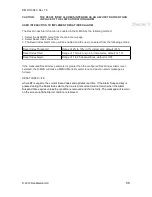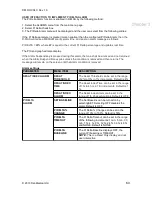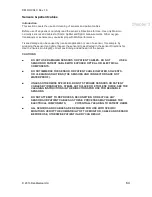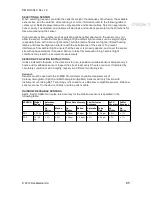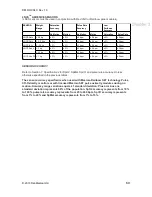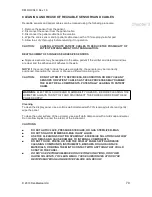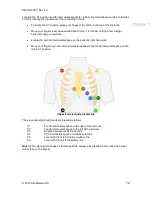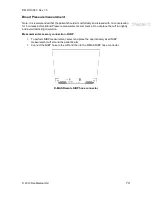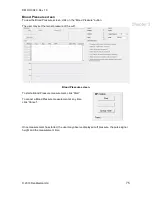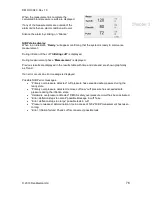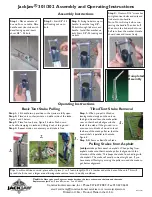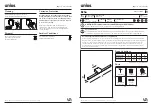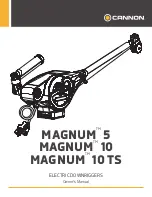
DM DOC 040 Rev 1.0
CLEANING AND REUSE OF REUSABLE SENSORS AND CABLES
Reusable sensors and patient cables can be cleaned using the following procedure:
1. Remove the sensor from the patient.
2. Disconnect the sensor from the patient cable.
3. Disconnect the patient cable from the monitor.
4. Wipe the entire sensor and/or patient cable clean with a 70% isopropyl alcohol pad.
5. Allow to air dry thoroughly before returning it to operation.
CAUTION:
CAREFULLY ROUTE PATIENT CABLES TO REDUCE THE POSSIBILITY OF
PATIENT ENTANGLEMENT OR STRANGULATION.
REATTACHMENT OF SINGLE USE ADHESIVE SENSORS
■ Single use sensors may be reapplied to the same patient if the emitter and detector windows
are clear and the adhesive still adheres to the skin.
NOTE:
If the sensor fails to track the pulse consistently, the sensors may be incorrectly
positioned. Reposition the sensor or choose a different monitoring site.
CAUTION:
DO NOT ATTEMPT TO REPROCESS, RECONDITION OR RECYCLE ANY
SENSORS OR PATIENT CABLES AS THESE PROCESSES MAY DAMAGE
THE ELECTRICAL COMPONENTS, POTENTIALLY LEADING TO PATIENT
HARM.
WARNING:
ELECTRICAL SHOCK AND FLAMMABILITY HAZARD – BEFORE CLEANING THE
OXIMETER, ALWAYS TURN IT OFF AND DISCONNECT THE POWER CORD FROM THE AC
POWER SUPPLY.
Cleaning
To clean the display panel, use a cotton swab moistened with 70% isopropyl alcohol and gently
wipe the panel.
To clean the outer surface of the oximeter, use a soft cloth dampened with a mild soap and water.
Do not allow liquids to enter the interior of the instrument.
CAUTIONS:
■
DO NOT AUTOCLAVE, PRESSURE STERILIZE, OR GAS STERILIZE D-MAS.
■
DO NOT SOAK OR IMMERSE D-MAS IN ANY LIQUID.
■
USE THE CLEANING SOLUTION SPARINGLY. EXCESSIVE SOLUTION CAN FLOW
INTO D-MAS AND CAUSE DAMAGE TO INTERNAL COMPONENTS.
■
DO NOT TOUCH, PRESS, OR RUB THE DISPLAY PANELS WITH ABRASIVE
CLEANING COMPOUNDS, INSTRUMENTS, BRUSHES, ROUGH-SURFACE
MATERIALS, OR BRING THEM INTO CONTACT WITH ANYTHING THAT COULD
SCRATCH THE PANEL.
■
DO NOT USE PETROLEUM-BASED OR ACETONE SOLUTIONS, OR OTHER
HARSH SOLVENTS, TO CLEAN D-MAS. THESE SUBSTANCES ATTACK THE
DEVICE’S MATERIALS AND DEVICE FAILURE CAN RESULT.
© 2013 DanMedical Ltd
70



